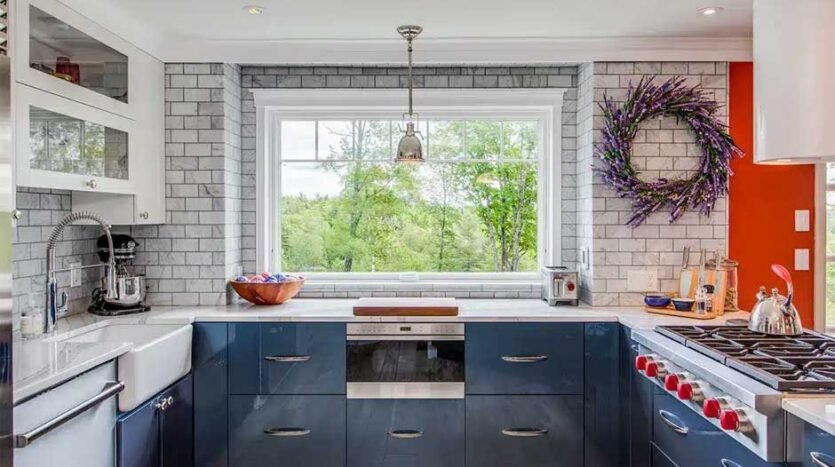A Complete Guide to Modern Kitchen Design
A modern kitchen is no longer just a place to cook. It has evolved into a central hub where functionality, aesthetics, and lifestyle come together. Today, homeowners look for kitchens that are visually refined, easy to maintain, and thoughtfully designed for both everyday tasks and social interaction. Modern kitchen design focuses on clean geometry, open layouts, and high-performance materials that ensure durability while enhancing overall appeal.
The Shift Toward Simplicity and Function
Modern kitchens are defined by their minimalist approach. Instead of decorative elements and heavy detailing, the design emphasizes simplicity and practicality. Flat-panel cabinets, seamless storage, and smooth finishes contribute to a clean and uninterrupted visual flow. This approach not only improves aesthetics but also makes cleaning and upkeep easier, which is an important factor for busy households.
Layout That Supports Daily Living
The layout of a modern kitchen is planned to improve efficiency. Open floor concepts allow movement between cooking, dining, and relaxation areas without obstacles. Central islands serve multiple functions, including meal preparation, serving, and casual seating. This integration of spaces ensures that the kitchen supports different activities without feeling crowded.
Use of Calm and Neutral Shades
Color plays a subtle but powerful role in modern kitchen design. Neutral tones such as white, grey, taupe, and soft charcoal are commonly used to create a balanced atmosphere. These shades reflect light well, making the space feel open and calm. To add character, designers often include understated accents through fixtures, metal trims, or natural stone textures without overpowering the overall color scheme.
Material Selection for a Refined Look
The choice of materials influences both style and longevity. Engineered stone countertops, matte cabinetry, and integrated appliances are favored for their ability to provide a polished and timeless finish. Surfaces are selected for their resistance to wear, making them suitable for everyday use while maintaining a sleek appearance.
Lighting That Enhances the Environment
Lighting is carefully incorporated to highlight design elements and support functionality. Recessed lighting, under-cabinet illumination, and pendant fixtures above kitchen islands help create layers of light. Proper lighting placement ensures that the workspace remains bright and visually appealing at all hours, enhancing both safety and style.
Technology and Smart Integration
Modern kitchens often include smart features designed for convenience. Touch-sensitive faucets, induction cooktops, and built-in organizational systems help streamline daily tasks. These elements are chosen not for novelty but for their ability to enhance the user experience. By integrating technology smoothly into the design, the kitchen remains uncluttered while offering advanced functionality.
Organized Storage as a Design Feature
Clutter disrupts the clean look of a modern kitchen, which is why storage planning is a key component. Pull-out compartments, concealed drawers, and vertical storage units help maintain order. Every item is given a place, allowing surfaces to remain clear and visually consistent. This approach not only improves functionality but also contributes to a calm and structured environment.
Customization Within a Minimal Design Framework
While modern design favors simplicity, it still provides opportunities for personal expression. Homeowners may choose unique countertop textures, designer fixtures, or distinctive backsplash materials to add personality. These elements act as subtle highlights within an otherwise streamlined setting, allowing individuality without compromising the overall harmony of the space.
Eco-Friendly Choices in Modern Kitchens
Sustainability has become an important aspect of modern kitchen planning. Energy-efficient appliances, responsibly sourced materials, and durable finishes are preferred choices. These elements not only support environmental responsibility but also add long-term value by reducing maintenance and energy costs. Good ventilation and natural light further enhance comfort and well-being within the space.
Creating a Space That Stands the Test of Time
A modern kitchen is designed with long-term usability in mind. Instead of following temporary trends, it focuses on balance, material quality, and thoughtful planning. This ensures that the space remains functional, stylish, and relevant for years to come. The goal is to create a kitchen that adapts to changing needs without requiring frequent updates.
A thoughtfully planned Contemporary Kitchen represents the ideal intersection of style, comfort, and practicality. With careful attention to layout, materials, and organization, it becomes a space that enhances everyday living while reflecting a refined design approach.


